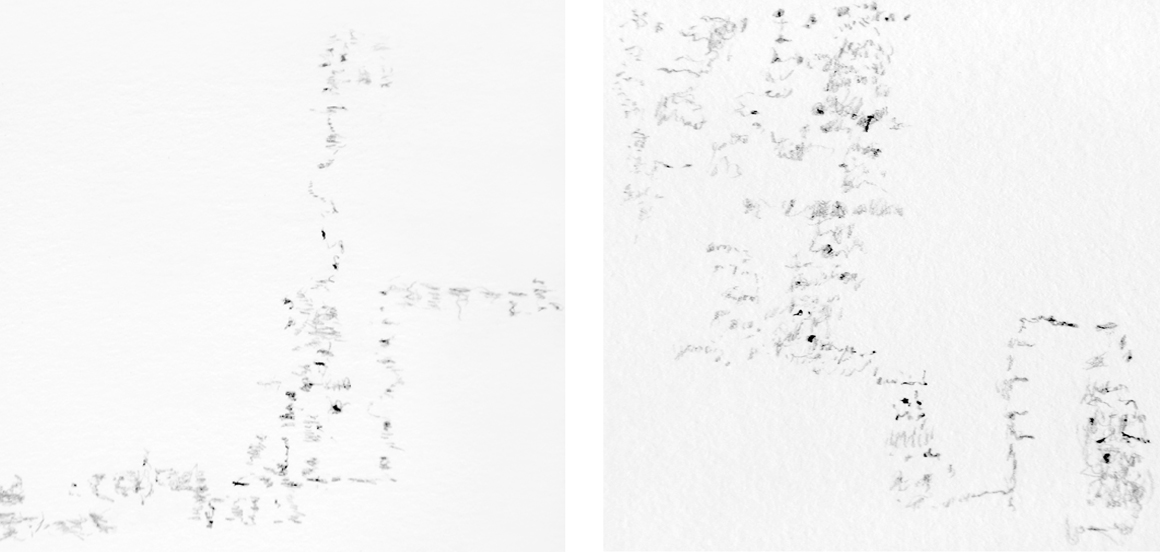Nicole De Brabandere
| Drawing Texture | ||
| The hard density of the graphite pencil tip moves quickly and at a fast pace as it feels for a trajectory through the visible texture of woven threads. The drawing contour pivots as it oscillates between what feels like broken tangents and connective threads, between weaving along, under and through the surface. With each new directional alignment, the contour pulls out of the loose space under overlap, into tightening, swelling threads that come out on top. Movement converges depth and surface tension to stay afloat in consistencies that are in excess of any single dimension. Vision slows to the clammy touch of details in the dark that are too large to grasp, then lightens as it lands a clear line of sight with the sharp precision of the graphite tip. And as the movement accelerates, it gains a fluency that unravels the tense hold of threads. Just as in slowing, the contour becomes heavy under its own weight, or under the hold of an overwhelming tightness. In rendering the woven surface, the contour must press, gather and condense these differences, between extension and doubling back, between smooth surface and precise details, where the contour looses track of any single force of form.
| ||
 Drawing Texture (2015) | ||
| The
above drawings articulate the movement of a continuous contour that navigates a woven texture - the rendering movement cannot outline each thread, intersection or quadrant, but must navigate the surface between thread, line, overlap and shadow.
In the milieu of drawing texture, the difference between tracing and sighting lose distinction—the tip of the pencil, the rendering trace and gesture all dynamically inform recognition with varying emphasis. Tending to the generative excess of this informing process in the practice of drawing requires the careful attention to emergent material, technical and affective specificities. Below I experiment with the same swatch of woven fabric that was introduced that was drawn in the previous iteration. This time, the contour is drawn on a piece of fabric that is stretched over a frame in drawing texture (2015).
| ||
| Drawing Texture (Weave) (2015) 1:20 min | ||
| Once the contour is no longer aligned with the form of the trace, but with the rhythm of the variable tension of pressing against the rendering surface, new potential relations between contour and trace begin to emerge. In drawing texture (powder) (2017) the contour presses upwards from beneath charcoal-coated fabric such that the surface of charcoal powder ruptures along the edges of the contour's path. The intense, inhabited alignment of contour and direction is dampened as the movement articulates accumulating volumes on the surface, under the pressing agitation of the rendering contour.
| ||
Drawing Texture (powder) (2017) 1:31 min | ||
|
Rather than take information for granted as something that an already familiar or recognizable, this process differentiates how information emerges in and through modes of perception that are as much constituting as they are constituted in practice. This does not do away with already existing tendencies of recognition but rather demonstrates how these tendencies open to differences as they are inhabited over series. The observable and conceptual content that emerges in such processes is not isolable from corporeal textures and the way these textures propose new modes of perception.
| ||
|
|